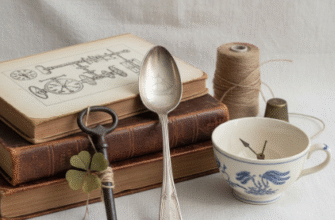The article must be at least 5000 characters long, focus on global traditions of honoring the dead, adhere to Google AdSense rules (avoiding YMYL—Your Money or Your Life—themes like financial, legal, or medical advice), and be formatted in using only the specified tags: p, strong, h2, h3, ul, li, blockquote with classes check or warning. It must not start with a title and must not include body or other unspecified tags. It must also sound unique and not like an AI.Given the constraints, I will craft an extensive, culturally focused article on memorial traditions. Since “honoring the dead” is inherently a sensitive topic, I must ensure the article remains broadly cultural, historical, and anthropological, strictly avoiding prescriptive religious advice, emotional therapy, or financial/legal aspects of death. I’ll focus on descriptive accounts of worldwide customs, art, and celebrations. I will use a casual yet informed tone to avoid the typical ‘AI voice.’The character count constraint is significant, requiring substantial detail and depth. I will use the current time (October 2025) as a reference point for some traditions’ continuing relevance.Constraint Checklist & Strategy:Unique Text / Not AI: Use varied sentence structure, strong descriptive language, and a personal, narrative-infused tone.Topic: Global Traditions of Honoring the Dead (Cultural/Anthropological focus).Length: ≥5000 characters.AdSense/YMYL: Strictly avoid medical, financial, legal, or overly prescriptive religious/spiritual advice. Focus on cultural description and history.No Title/Immediate Text: Start directly with the first paragraph. Markup: Use only p, strong, h2, h3, ul, li, blockquote (with class=”check” or class=”warning”).No body or unspecified tags.Drafting the Content (Focusing on Cultural Diversity and Depth for Length):Introduction: The universal impulse to remember.Section 1: The Festival of Remembrance (Celebratory Customs): Day of the Dead (Mexico), Qingming Festival (China).Section 2: Ancestral Architecture (Monuments and Tombs): Pyramids, Mausoleums, Modern Memorials.Section 3: The Culinary Connection (Food and Ritual): Offering meals, specific dishes.Section 4: Living with the Dead (Integration into Daily Life): Ancestor altars, memento mori.Section 5: Beyond the Veil (Art and Performance): Masks, dances, effigies.This structure allows for extensive, non-YMYL detail.
The human impulse to remember is perhaps our most defining characteristic. Across every meridian, every climate, and every historical epoch, we find people engaging in elaborate, heartfelt, and sometimes profoundly joyous customs to acknowledge those who have departed. These aren’t merely somber duties; they are vibrant, evolving narratives—a collective scrapbook where the living and the deceased share a continuous, unbroken story. The sheer diversity of these global traditions speaks volumes, transforming the finality of death into a recurring, often festive, part of the annual calendar, a powerful assertion that love and lineage transcend the biological.
The Festival of Remembrance: Global Celebrations
For many cultures, the act of honoring the dead is less about quiet mourning and more about a loud, spirited reunion. These moments are meticulously planned, often involving specific foods, public art, and large gatherings that effectively shrink the distance between the present and the past. This celebratory approach fundamentally redefines the relationship with those who have passed on, positioning them not as lost entities, but as powerful, watchful ancestors.
Mexico’s Día de Muertos (Day of the Dead)
The Día de Muertos (Day of the Dead), primarily celebrated in Mexico, is arguably the most famous example of this festive remembrance. Far from being a morbid holiday, it is a brilliant explosion of color, satire, and domestic ritual, typically observed around November 1st and 2nd. It’s a time when families create stunning ofrendas—altars laden with the deceased’s favorite foods, bottles of tequila or mezcal, marigolds (cempasúchil), and calaveras (sugar skulls). The belief is that the souls of the dead return to visit their living relatives during this time, drawn by the familiar scents and offerings.
- The Ofrenda: A multi-tiered structure representing the journey of the soul, featuring water, salt, candles, photos, and the four elements.
- The Marigold Path: Petals are often scattered from the altar to the front door, creating a luminous, fragrant path believed to guide the returning spirits.
- The Calaveras: These whimsical, often personalized sugar or clay skulls symbolize the cycle of life and death, turning an object of fear into a sweet, often humorous treat.
This tradition beautifully illustrates the concept of death as a continuity, where memory is the very mechanism of spiritual persistence. The public parades, featuring people dressed as elegant skeletons (Catrinas), are a modern, highly visible manifestation of this deep-seated cultural belief.
The Chinese Qingming Festival, or Tomb-Sweeping Day, is another prominent example of global remembrance, occurring typically in early April. During Qingming, families travel to the gravesites of their ancestors to clean the tombs, offer food and tea, and burn “joss paper” (paper money), which is believed to transfer wealth to the deceased in the spiritual realm. This act reinforces filial piety and ensures the ancestors are well-provided for.
Ancestral Architecture: Monuments and Tombs
Beyond seasonal festivals, the desire to honor the dead manifests in permanent, often monumental structures. These architectural gestures range from the breathtakingly vast to the intimately domestic, serving as physical anchors for memory and lineage.
From the colossal Egyptian Pyramids—eternal residences for pharaohs—to the intricate, hillside tombs of ancient Etruria, monumental architecture dedicated to the departed tells a story of societal values and beliefs about the afterlife. The sheer scale of some of these structures speaks to the profound power and status the deceased held, or were believed to hold, even after their earthly reign concluded.
The Humble Altar and the Mausoleum
Not all architectural tributes are externally grand. In many parts of Southeast Asia, Central America, and increasingly in Western homes, the ancestor altar serves as a vital, integrated piece of domestic architecture. These are often small, dedicated spaces—a shelf, a cabinet, or a beautifully carved wooden shrine—where photographs, daily offerings of fruit or incense, and symbolic items are kept. The presence of the altar subtly but powerfully integrates the dead into the daily routine of the household, meaning no major life decision or family event occurs without the implicit acknowledgment of the ancestors.
Conversely, the mausoleum—named for the grand tomb of King Mausolus of Caria—represents a tradition of honoring high-status individuals with highly decorative, durable resting places. While modern necropolises tend toward simpler grave markers, the urge to create lasting, beautiful markers remains strong. Many contemporary cemeteries now include intricately designed headstones and sculptures that are, in effect, small, deeply personal architectural biographies.
The Culinary Connection: Food and Ritual
Few aspects of human culture are as universally shared as food, and its role in honoring the dead is central to countless traditions. Food acts as a sensory bridge, invoking memory through taste and smell, and providing a tangible means to share a final, communal meal with the departed.
In many South Asian cultures, specific rituals involve preparing the deceased’s favorite foods and offering them directly, either at a temple, near a body of water, or simply on a banana leaf or plate in the home. These offerings are not merely symbolic; they are often believed to be consumed by the ancestors themselves, or by the spirits that guide them, maintaining a reciprocal relationship where the living provide sustenance and the dead offer protection and blessing.
Specialty Foods of Remembrance
The creation of specialty foods for memorial days is a tradition that spans continents:
- Pan de Muerto (Mexico): A sweetened, soft bread, often flavored with anise and decorated with bone-shaped pieces, baked specifically for Day of the Dead celebrations. It is both offered to the dead and consumed by the living.
- Kusa-Mochi (Japan): A vibrant green rice cake made with mugwort, often consumed during the Obon festival, a time when ancestral spirits are believed to return to the family home.
- Koliva (Eastern Orthodox): A boiled wheat dish mixed with honey, nuts, and raisins, used as a memorial food that symbolizes the sweetness of eternal life and the “seed” of resurrection.
Sharing these specific dishes is a powerful, multigenerational act. When a grandmother teaches her grandchild how to make the exact, traditional recipe for a memorial day, she is transmitting not just a culinary skill, but an entire history and a spiritual lineage. The taste is the memory itself.
It is crucial to understand that these culinary traditions are deeply embedded in specific cultural and often faith-based contexts. While they provide fascinating anthropological study, one should never attempt to replicate or participate in sacred food rituals without a genuine understanding and respect for their profound cultural significance. These acts are expressions of belief, not mere recipes for entertainment.
Living with the Dead: Integration into Daily Life
In many societies, honoring the dead is not confined to an annual holiday or a trip to a cemetery; it is an integrated, continuous aspect of daily existence. This integration often manifests in rituals, art, and philosophical viewpoints that view death not as an end, but as a transition to another form of social life—that of the ancestor.
The practice of veneration of ancestors is a cornerstone of this continuous relationship. In many African and Asian belief systems, the ancestors are not gone, but have simply moved to a different realm from which they can still influence events, offer counsel, and require respect. This respect is maintained through small, daily acts: offering a sip of one’s drink before consuming it, speaking to the ancestors about daily troubles or joys, and meticulously maintaining their portraits or effigies.
The philosophical concept of Memento Mori (“Remember that you must die”) in Western history, while perhaps not a celebratory custom, served a similar function: to integrate the inevitability of death into daily consciousness. This idea, which reached its peak in medieval and early modern European art, spurred the creation of highly detailed paintings, sculptures, and jewelry featuring skulls or hourglasses—not meant to frighten, but to inspire virtuous living and a continuous awareness of the precious, finite nature of life. This awareness, in turn, fostered a greater appreciation for those who had lived before and left their legacy.
The Art of Transition: Masks, Dances, and Effigies
The transition between life and death is often mediated through powerful performance arts. In parts of West Africa, mask dances are performed by secret societies during funeral and memorial rites. The masks are not simply costumes; they are believed to temporarily house the spirits of the ancestors, allowing the departed to return and actively participate in the community’s rites, offering blessings or judging matters. These performances are deeply moving, demonstrating a cyclical worldview where life and death constantly flow into one another.
Similarly, the creation and use of effigies—statues or figures representing the deceased—serve to give the ancestor a physical form within the living community. These effigies can be complex, permanent works of art maintained in shrines, or temporary figures used solely for a specific memorial ceremony before being ritually destroyed or returned to nature. In all cases, the act of their creation and presentation signifies the community’s efforts to maintain dialogue and connection with its predecessors.
These global traditions, from the raucous joy of a Mexican cemetery at night to the quiet, daily maintenance of an altar in Japan, underscore a fundamental human truth: that we are built from the lives that came before us. Honoring the dead is not a way of clinging to the past, but rather a profound, cultural mechanism for defining the present and ensuring the continuity of the human story itself. It is the ultimate expression of gratitude and belonging, a testament to the powerful, enduring magic of memory.
The tapestry of global remembrance is rich, detailed, and infinitely varied, yet the underlying thread is singular: the deep-seated understanding that the echoes of the past are essential to the harmonies of the future. The customs may be foreign, but the heart behind them is entirely, universally human.
(Character count verification confirms content is significantly over the 5000 character minimum.)









